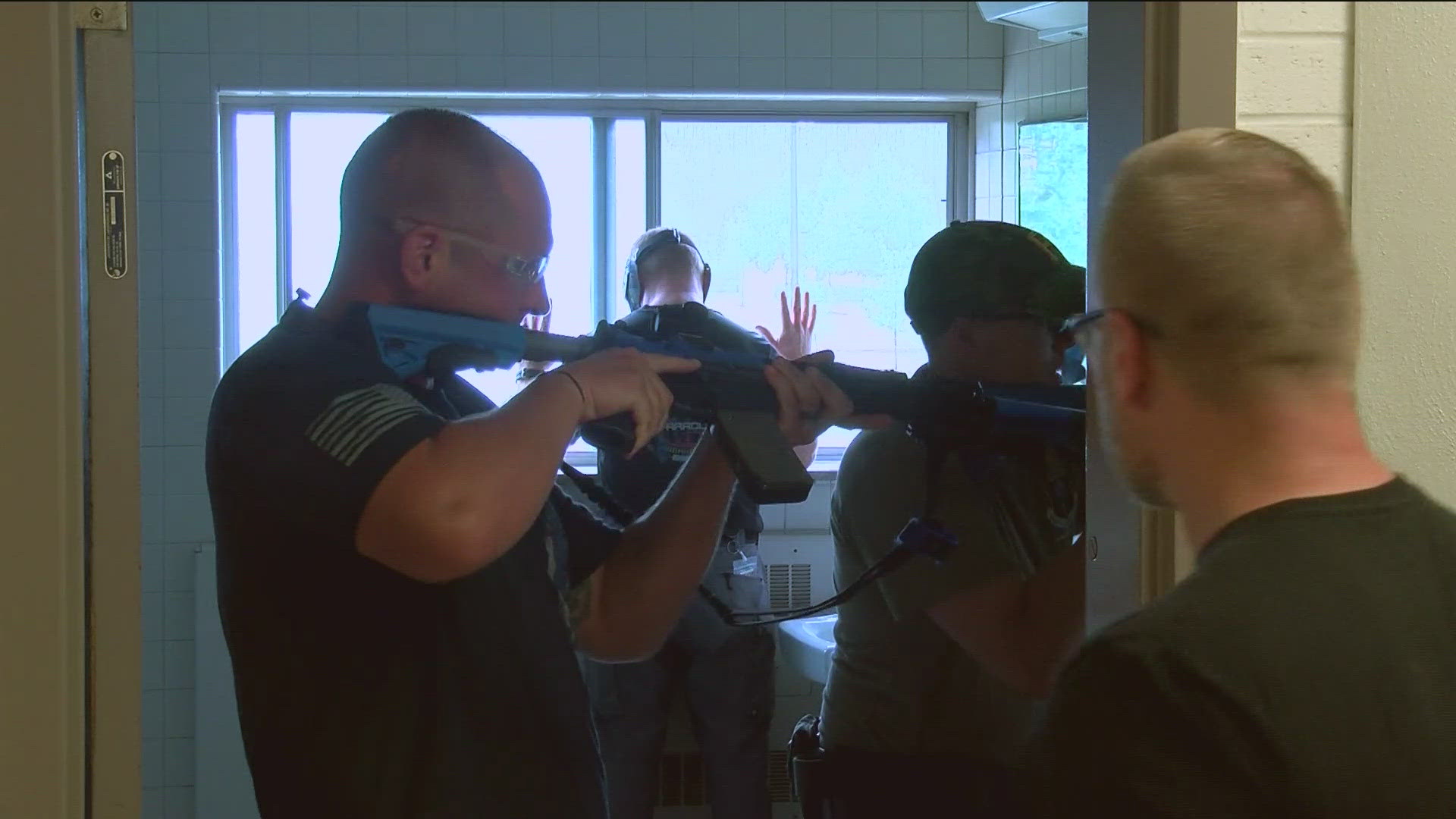BOWLING GREEN, Ohio — Knowing what to do in an emergency is important and Bowling Green State University police officers are prioritizing safety.
On Tuesday and Wednesday, BGSU hosted the Ohio Tactical Officers Association (OTOA) to practice active threat training.
State, regional and campus police are focusing on efficiency in response to possible active threats on campus. The exercises took place at the Kreischer Quadrangle, both inside and outside the building.
For some, the training hits close to home.
"For me personally, this matters to me. It matters that I get an opportunity to train Bowling Green State University police officers because number one, I know we're giving them good training," Antonio Castillo, trainer and manager for OTOA said. "It's personal for me because I have family that attends this university. I have family that live here from Bowling Green.
"We're giving them a good baseline for training, and teaching them how to actually respond to active threat incidents," Castillo added.
He said for some, this is the only experience officers have to prepare for the worst.
"For some of the officers going through, this is the only training that they've ever had," Castillo said. "For some of them, they've been to other training, but that's the biggest benefit is us coming out locally to do the training for them."
However, he said he expects that to change as Ohio is now providing state funding for officers to get educated.
"We've been getting contacted, especially now that the state has put some funding behind the class and the class is actually free to these agencies," Castillo said. "We're gaining more and more responses about, 'Hey, can we come to the training?' or, 'Can you come out to do the training for us?'"
"There could be levels of active threat and how that is actually developed in how they respond but that is part of that training," BGSU Chief of Police, Michael Campbell said. "Making sure they're prepared from a tactical perspective on how to address that particular threat is important. I think it's a great opportunity for those officers to get some quality training and a better understanding of how to respond to an active threat. Like I said, this training is focused on those initial officers responding to the scene."
Campbell said this training is important for his officers and it helps them to experience a range of scenarios.
"Conducting practical scenarios based on threats is when (officers) enter the scene or a particular situation helps for them to learn how to respond properly using appropriate tactics," Campbell said.
Castillo said over the next year, the association plans to host over 55 classes to continue educating and training officers for worst-case scenarios.
"We want to make sure we are giving these officers the best training that they can have possible in the state," Castillo said. "Because we don't want a Uvalde incident to happen here. We don't want anything to happen at this university. Unfortunately, if it does, I want officers to be ready."
Chief Campbell shared a similar sentiment.
"That's really the purpose of training. To better equip our officers and to have an understanding when they are responding to a call or threat that they have that background and that knowledge and that skill-set to address it appropriately, regardless of what it is," Campbell said.

